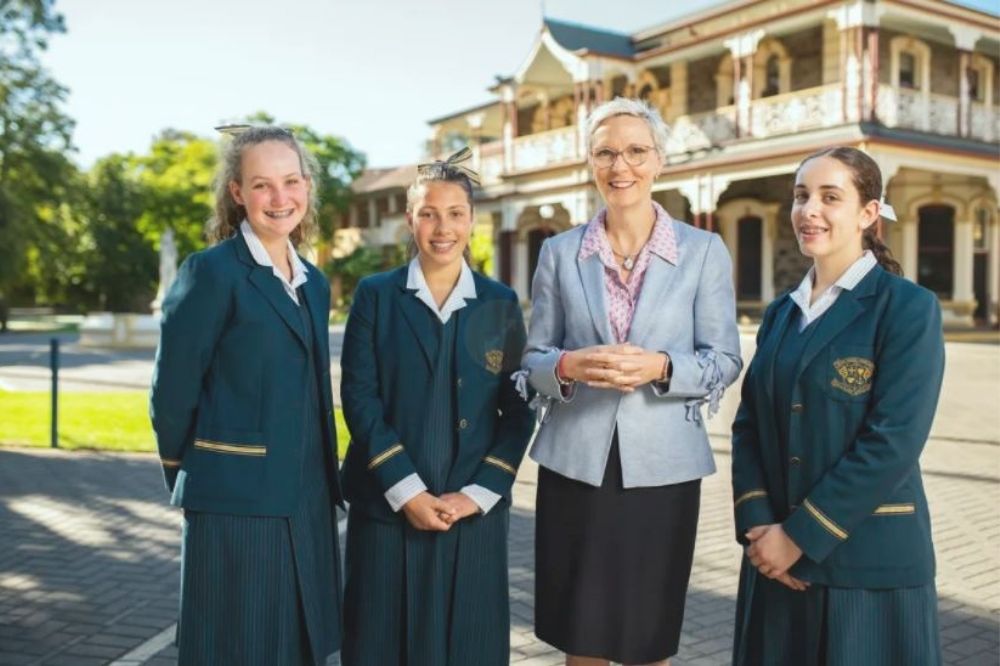
Dr Nicole Archard is a highly qualified, passionate advocate for girls’ education – and with a Doctor in Philosophy in Gender, Girls’ Education, Women and Leadership, in addition to three Masters’ degrees, she is well qualified to champion that view.
Dr Archard, who heads up Loreto College Marryatville, believes that a girls' school environment is the best place for girls to be educated and that it equips them to challenge gender stereotypes, develop a confident and articulate voice, develop leadership capacity in all forums, and be comfortable within themselves.
Below, The Educator speaks to Dr Archard about the value of an all-girls’ education and how her school’s successful SEL programs are having a meaningful – and measurable – impact.
TE: Why do you believe that a girls' school environment is the best place for girls to be educated, as opposed to a co-ed school?
Girls’ schools do more than just teach the curriculum and offer a range of sporting and co-curricular opportunities – all schools do that. What girls’ schools do differently is to purposefully educate girls in order to develop girls’ self-concept, self-efficacy, and self-confidence so that girls develop the knowledge and skills required to reject and overcome the gender stereotypes that attempt to define them. Schooling is so much more than academic outcomes – certainly these open doors, but it is the other skills that young women develop in relation to their confidence and belief in themselves that keeps the door open. Single-sex schools take away gender stereotypes. This doesn’t mean that girls can’t participate and do things that we might label as stereotypically feminine – it’s just as important to celebrate being a girl! However, we must also ensure that girls are not excluded from opportunities just because they are a girl.
TE: What does staff recruitment and student enrolment look like at Loreto Marryatville in 2022?
We are fortunate as a school that our student enrolment is growing which has the flow on effect of allowing us to increase our staffing. As a school we have two strategic objectives: to be a ‘future looking school’ as well as a ‘school of choice and excellence.’ In order to achieve these objectives, we have restructured our leadership team to reflect an equal focus on learning and wellbeing. The new positions of Assistant Principal: Learning and Innovation and Assistant Principal: Wellbeing and Engagement ensures that strategically, we are focusing on girls’ holistic development and growth. We also understand that best practice in wellbeing and learning should also be evidence driven and based on an analysis of data that is then used to drive student outcomes as well as teacher professional practice. To achieve this goal, we have also developed a new position titled, Director of Learning Analytics and Technology. This new role assists teachers and leaders within the College to understand student engagement and performance so that both wellbeing and learning outcomes can be tracked and measured. This analysis is then used to inform key people within the College of the impact of interventions and programs that have been put into place. This ensures that all programs and practices are evidence based with regard to wellbeing and learning outcomes.
TE: I understand the College runs a ‘Social, Emotional and Academic Development (SEAD) program. Can you tell us more about this?
One aspect of the SEAD program that allows staff to gain direct and immediate feedback from students is the use of Student Pulse, a program devised by Educator Impact. Student Pulse is an online tool for measuring the week-to-week wellbeing and engagement of students. Student Pulse can be used to track students at an individual level, as a class or year level group, as well as across the whole school. It also tracks anonymised student attitudes using the ARACY Common Approach measures in order to assess the following areas: Valued and Safe, Healthy, Material Basics, Learning, Participating, and Positive Sense of Identity and Culture.
TE: What are some of the outcomes from the SEAD program, and how are these tracking in 2022?
This weekly data provides insight into students’ engagement with learning as well as their social and emotional needs, thus enabling the school to be both responsive to student’s immediate concerns as well as proactive in the use of data to further inform and develop the SEAD Program based on differing cohorts needs. Thus, the SEAD program remains fluid by being responsive to students’ needs rather than being a static off the shelf model. The data collected through Student Pulse is also benchmarked against other schools, allowing us to see the impact of our programs and interventions. At the beginning of 2022, at a time where child and adolescent anxiety is high due to the impact of the pandemic, we were able to see that as a whole school the wellbeing outcomes of girls at Loreto were higher than students in other Australian schools, thus confirming that our SEAD Program is effectively meeting the needs of the girls in our care.
In this new series, The Educator will be speaking with leading principals from both single-sex and co-ed schools.


